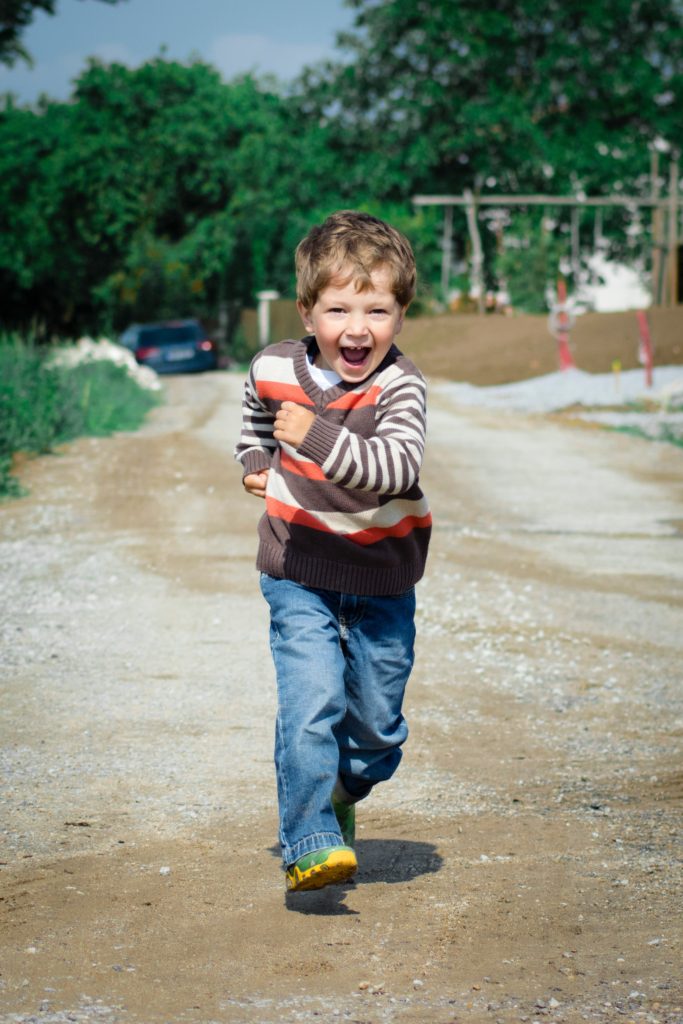We all have emotions but understanding our emotions is not always so easy. Babies and toddlers are born with certain emotional reactions, like crying, smiling, and laughing but they are not born with an understanding of the emotions or their reactions. They do not always understand feeling tired, sad, or angry and not understanding can lead to frustration.
Teaching kids how to understand their feelings has many different steps. The most important to start with is teaching them the vocabulary they need in order to name their feelings and emotions. We cannot ask our children to use their words and tell us what is wrong if they do not have the words to express what they are feeling. If you’re angry but do not know the word mad you may only know how to express that anger with screaming, crying and tantrums.

Teach Feeling Words
As our children start to reach around age 2, they can learn and start to understand the most common and simple emotions such as sad, mad, happy, and fear. Expanding on these simple emotional words is important as your child grows to build their emotional literacy. Having an expansive emotional vocabulary helps your child to name their different emotions in a productive and healthy manner.
Use a Feeling Chart
A very easy and practical way to teach children about their emotions is with a feeling chart. A feeling chart shows faces expressing different emotions. This not only teaches children about the specific vocabulary of different emotions but also how to interpret other’s facial reactions. Understanding our own emotions is important but it is also important for social emotional intelligence. Teaching them to understand other’s emotions.

Talk About Feelings
Talking to your child about their feelings is important, especially during a time of extreme emotion such as crying or tantrums. Helping them work through that emotion and name their feelings is important as it is happening.
It can be as simple as…..
“You’re smiling you look so happy”
“Why are you crying? Are you sad?”
“I understand you’re mad it’s okay…”
“You look tired is it time to go to bed?”
Avoid Minimalizing or Talking Children Out of Their Feelings
It is important while talking to your kids about their emotions that you choose your own words carefully. It can be easy to minimalize what your child is feeling, especially when it comes to tantrums. Frustration can make you less patient and understanding. If we make our child’s ashamed of their emotions, they will go to great lengths to suppress them, causing many mental and physical health problems over time.
Avoid saying things like:
“Quit being so overdramatic”
“Don’t get so mad”
“Stop crying”
“Don’t be a baby”
“You’re overreacting”
“You don’t feel that way”
“Be a big girl/big boy”
Positive Ways to Express Feelings
Teaching our children positive ways to express their feelings can follow them through adulthood. Emotional intelligence as they grow older can help their chances of success in life and career tremendously. Once they have the vocabulary to verbally express their emotions it’s important to teach them healthy ways to do so.
- Teach them they can vent to you or a friend. Allowing your child to let out their emotions and get things off their chest, without consequences, can be extremely relieving to them.
- Teach them to write a letter. I do this often when I just need to work through what I’m feeling. Writing a letter can help you brain dump. Write everything as you feel it without thinking, not trying to worry about grammar or sentence structure, just writing to get everything out.
- Scream or hitting a pillow. It can be common for our emotions, especially anger, to become so overwhelming we feel like aggressive behavior. This is definitely true for kids. Teaching them to get out aggressive behavior on a pillow whether screaming or hitting it helps relieve that anger, without consequences to others.
Be a Role Model Express Strong Feelings in Healthy Ways
There are so many lessons to teach our kids and the majority of them can be taught in large part by being a role model for how we would like our kids to behave. This includes how we deal with our own emotions. If our kids, see us violent in anger or screaming they will understand that this is how you deal with those emotions. If we want our kids to find healthy ways to deal with those emotions, we need to also practice those healthy practices.
Read and Tell Stories About Feelings
Reading to children about emotions helps them understand situations that may cause specific emotions. This can include a story about a death and sadness or winning a soccer game and happiness. Books can have a wide variety of stories and lessons. We can use them to bring up emotions and how the characters were feeling. This also helps your children to start understanding other people’s emotions and how their actions may affect others.
Empathize with Your Childs Feelings
It’s not always to meet your child’s emotions and behavior with empathy but doing so can help them understand their emotions are okay to feel. Empathizing with them can help them feel okay about who they are, their feelings, and build self-esteem.
Download free emotion cards and a feeling chart here.
Sarah
Similar Posts:
Emotional Intelligence: The Key to a Lasting Marriage and How to Strengthen It
27 Things I Want My Kids to Know About Life
Living with High Functioning Anxiety



